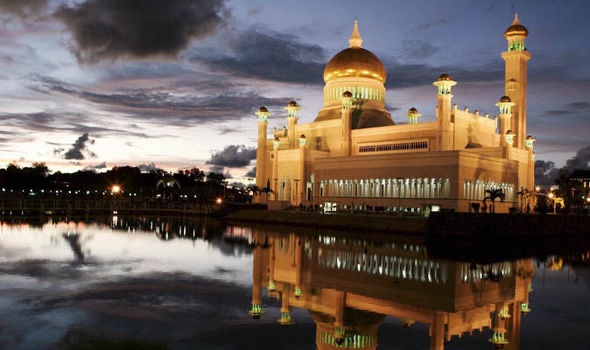ABOUT BRUNEI
Brunei is a small country that is located on the north coast of the island of Borneo in Southeast Asia. The country that is known for its bountiful oil and gas reserves consists of two unconnected segments of unequal size. They are bounded by the South China Sea and neighbouring the provincial Malaysian state of Sarawak which taken up to 5,765 square kilometres of the island’s total area. The country has several rivers flowing generally to the South China Sea and the largest river in Brunei is known as The Belait in the western segment. The soils of Brunei are deeply weathered, highly leached, and infertile. The best agricultural potential soil is found along the rivers and in some parts of the coastal floodplain.
Brunei has approximately 450,565 populations as recorded in July 2018. About 97 percent of them lives in the bigger western segment which contains the capital city of Bandar Seri Begawan. Bandar Seri Begawan is the largest urban city in Brunei and adjacent to the city is an older part called Kampong Ayer where the Malays live in houses built on stilts along the entrance of Brunei River. The urban area of Brunei has 77 percent of its population and the rural area which is the mountainous eastern part consists of only 22 percent. Brunei has 1.55 percent growth rate with 16.9 births/1,000 population and 3.7 deaths/1,000 population and the dominant ethnicity in Brunei is Malay which made up 65 percent of its population. The official language used in Brunei is Malay followed by English as a major second language.
Since 90 percent of the government revenue is from exploitation of its massive reserves of petroleum and natural gas, Brunei’s economy is almost totally dependent on this sector. The most productive offshore field is Champion which was discovered back in 1929 and is now operated by Brunei Shell Petroleum (BSP). This field is located in 30 metres of water, about 70 kilometres northeast of Seria and holds 40 percent of Brunei’s known reserves that produces 100,000 barrels a day. The oldest field offshore, South West Ampa which is located 13 kilometres off Kuala Belait, holds more than half of Brunei’s total gas reserves and production. With increasing production every year, Brunei became the third largest oil producer in Southeast Asia and is definitely a major player in the petrochemical industry in the world.
As for now, Brunei is the 105th largest export economy in the world with $5.53B export and $3.14B import which results in a positive trade balance of $2.39B. Although Brunei primarily exports its resources, this country surprisingly relies on imports for nearly all its manufactured goods and most of its food. Hence, in effort to sustain further economic growth, Brunei’s government strive to diversify their economy by developing other sectors, such as agriculture, fisheries, tourism, and financial services.
Their attempt to embark on other sector such as fisheries was not in vain, the fishing industry in Brunei is now one of the largest contributors of the country’s revenue.
Most of their extraordinary economic prosperity comes from oil and gas exportation which cause them to focus more on this industry to increase Brunei’s wealth and development. This makes the Government and citizens completely dependent on oil and gas exports which have been the backbone of the country’s economy. The growth of oil and gas industry has changed the role of agriculture industry in terms of significant. The number of labours in agriculture and the amount of land has declined due to the favourable employment opportunities in oil industry therefore, self-sufficiency decrease causing high dependency on importation especially in food products such as rice, vegetables and many more. They need to realize that the oil and gas exports will not sustain their wealth forever. The latest report issued by Department of Economic Planning and Development indicates that the oil and gas sector in the first quarter decreased 2.5 percent at constant prices year-on-year. That is why, the government need to improve or create other methods to increase their export product and maintain the state’s economy.
